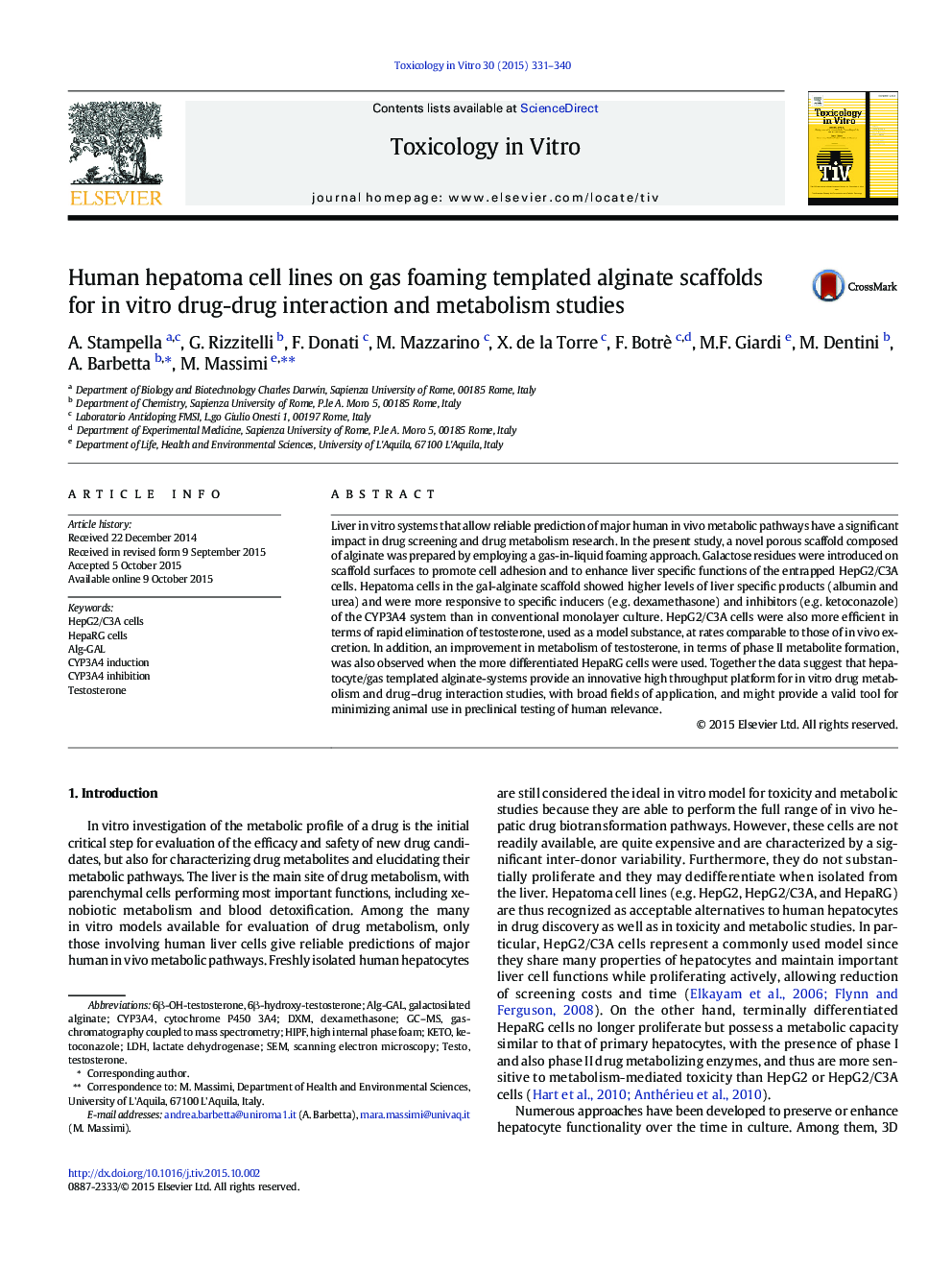| Article ID | Journal | Published Year | Pages | File Type |
|---|---|---|---|---|
| 2602444 | Toxicology in Vitro | 2015 | 10 Pages |
•A novel 3-D hepatocyte system based on an alginate-GAL scaffold is presented.•The system shows advantages in terms of cell viability and function vs. monolayer.•The system also clearly shows improved performance in metabolism of testosterone.•It represents an innovative and valid tool for in vitro drug metabolism studies.
Liver in vitro systems that allow reliable prediction of major human in vivo metabolic pathways have a significant impact in drug screening and drug metabolism research. In the present study, a novel porous scaffold composed of alginate was prepared by employing a gas-in-liquid foaming approach. Galactose residues were introduced on scaffold surfaces to promote cell adhesion and to enhance liver specific functions of the entrapped HepG2/C3A cells. Hepatoma cells in the gal-alginate scaffold showed higher levels of liver specific products (albumin and urea) and were more responsive to specific inducers (e.g. dexamethasone) and inhibitors (e.g. ketoconazole) of the CYP3A4 system than in conventional monolayer culture. HepG2/C3A cells were also more efficient in terms of rapid elimination of testosterone, used as a model substance, at rates comparable to those of in vivo excretion. In addition, an improvement in metabolism of testosterone, in terms of phase II metabolite formation, was also observed when the more differentiated HepaRG cells were used. Together the data suggest that hepatocyte/gas templated alginate-systems provide an innovative high throughput platform for in vitro drug metabolism and drug–drug interaction studies, with broad fields of application, and might provide a valid tool for minimizing animal use in preclinical testing of human relevance.
